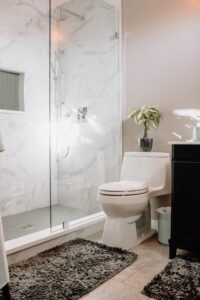Women with smaller fibroids (these are non-cancerous uterine growths) may not experience any symptoms. In fact, they may never receive a diagnosis, since they can be hard to detect if you don’t have fibroid symptoms. But if you have large fibroids, the story looks a little different. Now, you may notice a whole host of disruptive symptoms, including pelvic pain, painful sex, long or heavy periods, constipation and frequent urination or even incontinence.
Of course, all of these symptoms are disruptive and upsetting. But some can be confusing. After all, you may wonder: how can a growth in my uterus mess with my bladder? You might also ask questions like, are fibroids cancerous? So, to help you understand, we're devoting this post to exploring fibroids and incontinence. We’ll explain why they are connected and how you can deal with related symptoms. First, though, let's delve into why fibroids can make you need to pee. Or make it hard to control urination.

One Journal of American Obstetrics & Gynecology study proved that large fibroids can enlarge your uterus, or change its overall shape. Then, that larger uterus may put pressure on your bladder. In turn, you’ll experience the frequent, urgent need to urinate.
Luckily, the same study proved that women’s urination frequency improved after fibroid treatment. And that’s good news, but here’s the problem. Treating the fibroids didn’t cure "urge incontinence," which is a term that describes that sudden, urgent need to urinate. Basically, this symptom leaves you going from zero to sixty without warning, meaning event after clearing up fibroids, incontinence could be a problem.
Now, that doesn’t mean you’ll have to live with urgency forever. It just means you’ll need to put in a bit more effort to retrain your bladder. But you don’t have to do it alone. Instead, check out these helpful tips from the American College of Physicians, designed to help you after fibroids cause urge incontinence.
When we talk about retraining your bladder, the goal is to help you go to the bathroom less often each day. For that reason, your first step is to keep a 'pee journal.' In it, you’ll track how many times, and at which times of day, you need to urinate. Ultimately, you’ll work towards extending the time between bathroom trips, in turn reducing the total times you urinate daily. But how can you stretch out the intervals between bathroom visits?
• When you feel the urge to pee, don’t rush to the bathroom. Instead, hold still and wait as long as you can.
• Eliminate “just in case" bathroom visits
• When you feel the urge to urinate, try to distract yourself with other thoughts.
• If the need to pee is urgent, try to give yourself even a small delay by crossing your legs or clenching your fists.
• Work out your pelvic floor muscles with 'kegels' to make holding in your urine a bit easier.
• Continue to drink lots of water: staying hydrated protects your urinary tract health and prevents infections.
• Avoid caffeinated beverages, since they make you have to pee more often.
Incontinence after fibroids can be painful and disruptive to your life. But this is not a problem you have to live with forever. Instead, contact our Fibroid Doctors in Dallas at the Dallas Fibroid Center to explore your treatment options. With care and a bit of bladder retraining, you can get back to feeling like yourself!

Our Locations
Monday - Friday
8am - 5pm
Dallas
3920 W Wheatland Rd,
Suite 108,
Dallas, TX 75237
Plano
5425 W. Spring Creek Parkway,
Suite 100
Plano, TX 75024
Scheduling
Please contact our dedicated specialists to schedule a consultation today.
2025 Dallas Fibroid Center. All rights reserved. Website Design by Healthcare Success